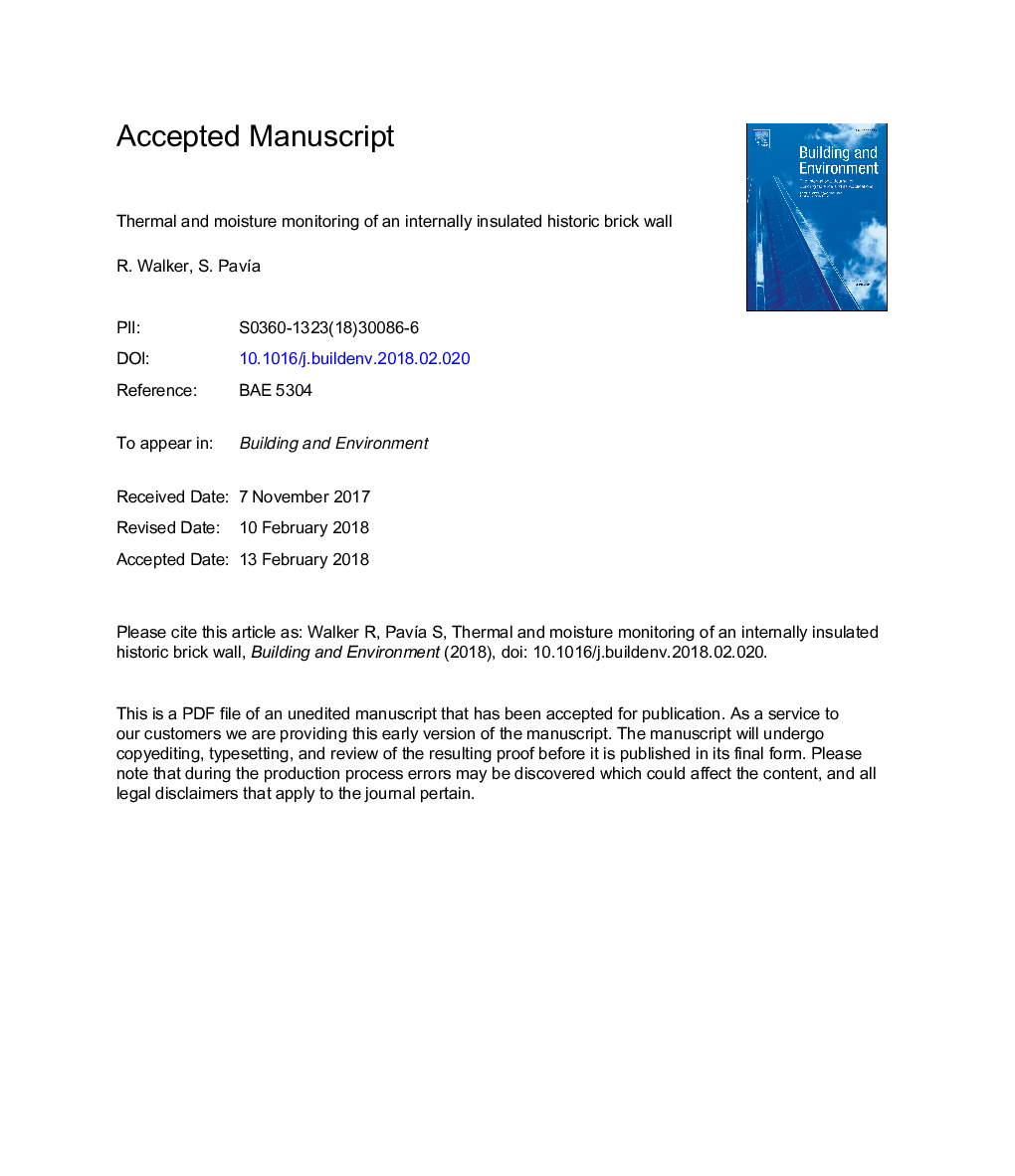| Article ID | Journal | Published Year | Pages | File Type |
|---|---|---|---|---|
| 6697896 | Building and Environment | 2018 | 17 Pages |
Abstract
The in-situ performance of the insulations agrees with their laboratory measured thermal and moisture properties. It is consistently evidenced that the vapour permeability of the insulation has a large impact on the wall moisture. Walls with vapour permeable insulations closely reflect internal room relative humidity (RH) conditions and show the greatest response and the shortest lag time in reflecting changes in room RH. Conversely, the walls with low vapour permeable insulations display lower RH fluctuations and longer lag periods as moisture movement is impeded. There is a reduction in the wall's RH for all insulations when room heating is applied with the walls with vapour permeable insulations showing the largest reduction in RH due to wall moisture drying and raising wall temperatures while the less vapour permeable insulation lowered RH mostly on account of rising wall temperatures. The results suggest that vapour permeable insulations are suitable in moisture environments with periods of low RH that provide the wall with an opportunity to dry. The thermal performance of an insulation must be counterbalanced against moisture performance and the resultant longterm durability of the building.
Related Topics
Physical Sciences and Engineering
Energy
Renewable Energy, Sustainability and the Environment
Authors
R. Walker, S. PavÃa,
